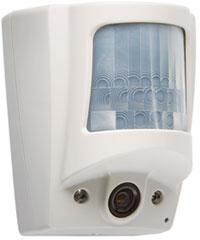How Monitored Video Alarms Deliver Insurance Discounts

|
Monitoring makes a difference. Surveillance is not a monitored Video Intrusion Alarm. Security video and DVRs (whether on-site or the newer DVRs in the cloud) provide remote viewing and document what has happened – but their primary use isn’t catching burglars.
New video alarm technologies and priority response policies have increased the arrest rates for burglar alarms over a thousandfold.
Because the most recent stock market crash killed the “investment income” business model driving insurance profits, underwriters are now forced to make money the old-fashioned way, reducing claims and losses, and they need partners. They need partners and are turning to video verified alarms monitored by central stations. The good news is that this means “improved security and arrests” can now translate to “reduced insurance premiums” and even access to insurance coverage that has previously been impossible to obtain. Monitored video alarm systems are making arrests and changing the business model for property/casualty underwriting; insurance companies have a financial gun to their heads, and they need to change or face the consequences. They are changing.
Video Intrusion Alarms
The tsunami of false alarms from traditional systems means police no longer respond in many areas of the country. Detroit and San Jose announced that their police will no longer respond to a traditional alarm system; they only respond to verified alarms. Even in areas where police do respond, they view traditional alarms as a nuisance because more than 98 percent are not actual crimes. Video alarms are different – a virtual eyewitness to a crime. Video verification delivers a video clip of what caused the alarm to the monitoring station for immediate review and dispatch. The goal is to catch criminals in the act, and it works.
A recent case study on their success appeared in the March 2012 issue of Police Chief Magazine, “Arresting Results: How One District Achieved a 70 Percent Closure Rate with Video Alarms.” The story describes how budget-strapped Detroit protected 30 school buildings with wireless video intrusion alarms for the cost of a single surveillance system. MotionViewers sent the video clips to the monitoring station for immediate review – and Detroit police arrested more than 100 people for an amazing 70 percent arrest rate. They saved millions of dollars in insurance losses from vandalism and theft.
In February, the Los Angeles Sheriff’s Dept. announced to an alarm industry meeting at the Los Angeles Police Academy that their 911 dispatch center had implemented priority response to video alarms; encouraging the industry to upgrade their customers for improved service. Lt. John Cannon shared that initial results for the Los Angeles Sheriff’s Dept. showed a 19 percent arrest rate for video alarms. In contrast, traditional alarm systems have one or two arrests for every 10,000 alarms, according to most studies. A survey of both police and sheriffs completed in the summer of 2011 showed that 97 percent of law enforcement support priority response to video verified alarms.
While false alarms may be an issue for law enforcement, arrest rates drive insurers. For an underwriter, a single arrest can prevent an additional 50 burglaries by professional thieves. This has the insurance industry’s attention.
Insurance Discounts
Sterling Grant & Associates offer commercial customers up to a 30 percent discount on their insurance rates if they install the Sterling Crime Free Program a comprehensive risk reduction program that includes Videofied alarms. This program provides an on-site risk assessment survey, an individualized safety and security plan, training for employees and tenants and an expert witness program. The results are reduced criminal activity and premises liability, and decreased claims severity. Police Chief Kevin Kotsur credits the program for a 13-percent crime reduction in Avondale, Ariz.
Working with the security integrators, Sterling Grant specifies video alarm systems that provide adequate protection to mitigate risk from the perspective of the insurer. While this may seem like “common sense,” the last 40 years, loss prevention has not been the major driver in the insurance market. Good security people make a “unilateral best guess” to design and sell a good system – but insurers have not been at the table educating the alarm industry where their greatest risk and losses were. Sterling has taken the initiative to partner with security companies to better understand and address the areas of risk – and their customers are rewarded with lower
insurance rates.
There are some types of insurance coverage that simply cannot be obtained that this partnership makes possible. One example is copper theft. Because recovery is impossible with copper theft claims, the insurers are now inserting a “precious metals exclusion” into their contracts that excludes copper theft claims. The problem is that the theft of $800 of copper may result in a $79,000 claim due to the cost of repairing the walls, wiring, plumbing and more. The only real solution is catching the crooks in the act. Now, Sterling Grant is able to offer policies that remove the precious metal exclusion and underwrite copper theft, resulting in a slightly more expensive policy that actually provides.
Looking for a reprint of this article?
From high-res PDFs to custom plaques, order your copy today!






